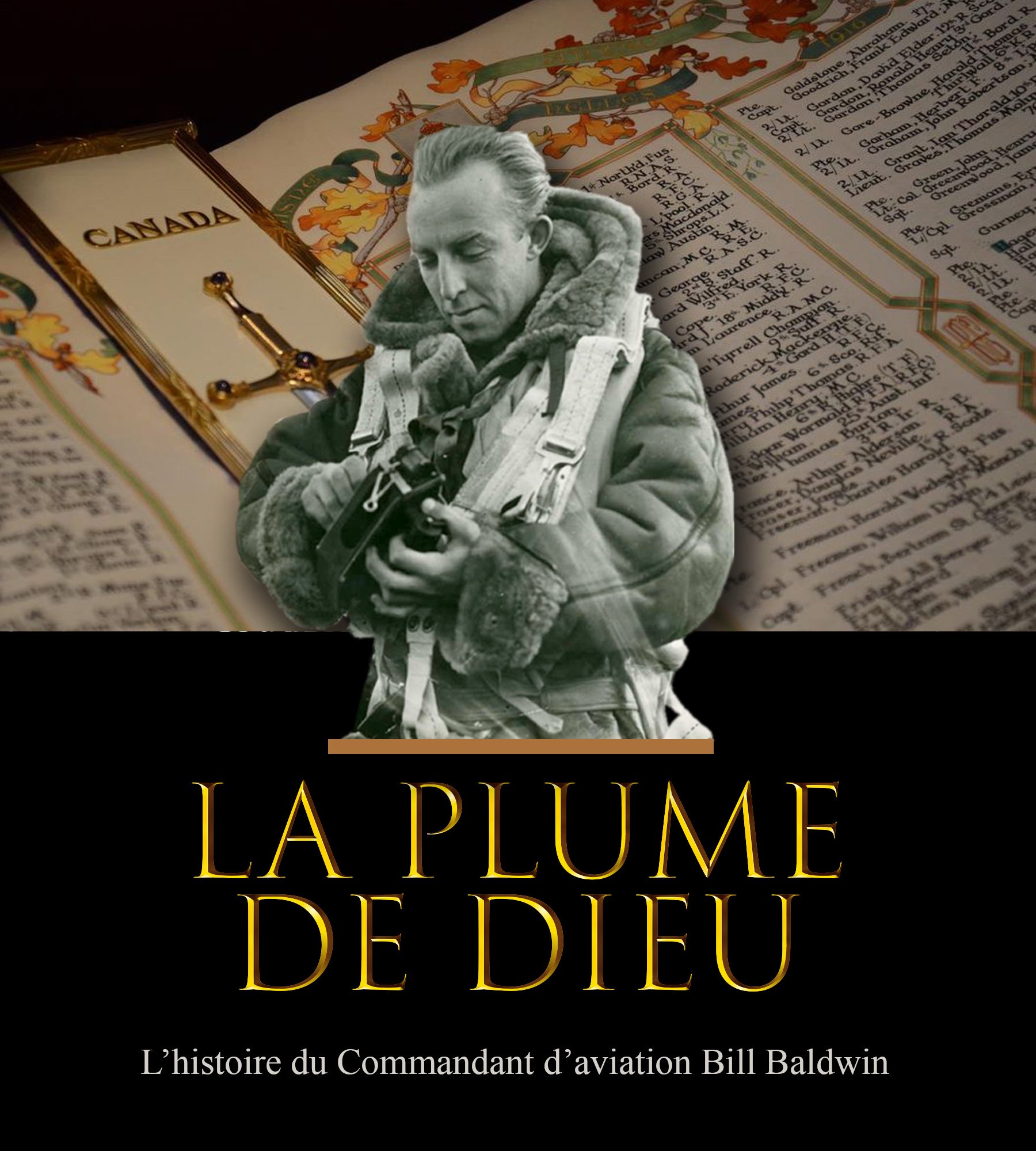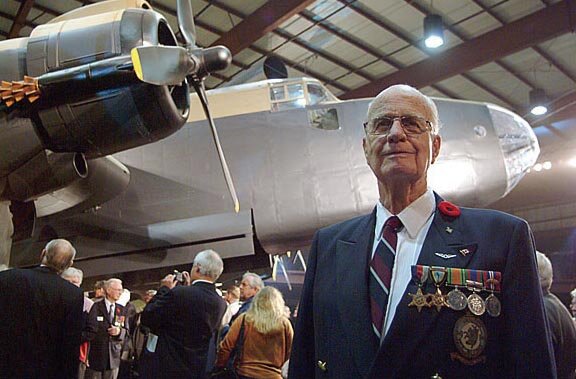FISHING FOR HALIBAGS
It was three months after VE Day and the crew of an RAF Handley Page Halifax (LW170) set out on a long distance weather patrol out over the Atlantic approaches to the British Isles. Sometime during the flight, the war-weary Halifax developed a fuel leak that no amount of fuel management could counteract. With fuel streaming, and her four Bristol Hercules engines sucking avgas out the other end, it was only a matter of time before the tanks would be dry and the men would be wet.
The crew turned for home when they realized their predicament, nursed the fuel consumption, prepared for ditching and radioed for help. A hundred miles to the west and north of Ireland near the Hebrides in the Irish Sea, it was evident that they were not going to make it. It was decision time. Use the remaining fuel to fly a power-on controlled ditching or fly on till the Halifax fell silent and into the sea. They opted for the former.
The crew from 518 Squadron were based at RAF Tiree on the Scottish Hebrides Islands. The squadron had been flying twice daily "Bismuth" (for British Isles Met Unit Temperature and Humidity) weather patrols hundreds of miles out into the Atlantic since early in the war. These very sorties gave D-Day planners foreknowledge of a short window of suitable weather that would fall on June 6th 1944. But the war was long over and this crew was looking at the inevitability of ditching in the cold Irish Sea. The South African pilot, Squadron Leader Peter Piejus, feathered the starboard outer propeller (that engine was causing the leak). He ordered everyone to assume their crash positions and tighten down their harnesses, circled down to the sea, and went over the procedures for ditching with his engineer. At the last, he turned into the wind, shallowed his ascent and settled the Halifax's tail low over the wave tops. The big four-engined aircraft dug her tail in, then slammed forward and came to an abrupt stop, wings awash. All things considered, it was a perfect ditching. The crew scrambled from the Halifax using hatches on the top side, secured the rubber ditching dinghy, climbed in and paddled quickly away from the sinking Halifax.
Problem was, the Halifax didn't sink. The ditching happened at 0900 hrs and the wallowing Halifax stayed afloat for the next 7 hours. Later that day, Jamaica Producer, a passing freighter, spotted the floating aircraft and made for her to provide assistance for anyone who might have survived. Just minutes after their arrival, at 1600 hrs, the Halifax sank and by 1700 hours they had the crew on board. Jamaica Producer's highly experienced navigator took her position at the point of sinking. It would be hard for everyone at the scene to imagine that 63 years later, people on both sides of the Atlantic would be working to bring her back to the surface.
On August 10th, 1945, the day of the ditching and rescue, the RAF knew exactly where the Halifax was while she remained afloat. Here we see a photograph taken by an RAF aircraft from an altitude of 400 feet. One can see that the Halifax (or Hali-bag as crews were fond of calling them) is in almost perfect condition. The two topside escape hatches can clearly be seen open. RAF Photo.
The last people to see Halifax LW170 along with the members of its RAF Met crew, was the crew of the Jamaica Producer, a cargo vessel that spotted the floating and fully intact Halifax. The log books of Jamaican Poducer stored at Lloyds of London indicate her very experienced navigator was able to get an accurate fix on the aircraft’s position at about the time she finally sank.
Enter Karl Kjarsgaard, the world's most determined and charismatic Halifax "fisherman". Karl, a 767 Captain with Air Canada is well known and respected in historic aviation circles for his dogged pursuit and final retrieval of two other Halifax bombers from very difficult resting places. The most documented and finest of these is the difficult and masterful retrieval of Halifax NA337 from the dark depths of Lake Mjosa in Norway in 1995. Resting at a depth of 750 feet, this Halifax was just a local legend in this remote Norwegian community, having ditched there at night late in the war after flak damage caused an engine fire. Only one crew member (the rear gunner) survived exposure in the frigid waters and the Halifax sunk soon after. Through the efforts of Karl and his team of Norwegians and Canadians this rare example of a Halifax was lifted from the muddy bottom and brought home to Canada with the help of the Canadian Air Force. The wreck was moved to a hangar at The RCAF Memorial Museum at Canadian Forces Base Trenton where it underwent years of superb restoration by the highly skilled members of the Halifax Aircraft Association to a non-flyable, but exquisite quality Halifax bomber - one of only three airframes remaining of the more than 6,000 built in Britain during the war.
The story of raising the Norwegian Halifax is legend, but it is the lessons learned and equipment designed during that project that will pay large dividends when it comes to the discovery and retrieval of LW170. There were many people who simply told Karl back in the early 1990s that this dream of raising the Halifax was impossible to realize, that he was nuts to even try. But Karl's war cry has always been "Press on regardless" and sweeping the naysayers and head shakers aside, Karl’s team made it happen through willpower, vision and some pretty cool gear. So, to say that it is impossible to locate a bomber that has lain on the bottom of the ocean at a depth of over 5,000 feet for 63 years and bring it to the surface, is to not understand the fortitude and courage of the Halifax 57 Rescue Team.
Why the name Halifax 57 Rescue? Well, back in the Second World War, whether manufacturing or repairing the Halifax, all parts, whether gear oleos, windscreen glass, bomb doors, trim tabs or throttle knobs, all started with the numerical prefix 57-. so every part Karl and his team will bring to the surface will have a serial number that begins with 57.
Related Stories
Click on image
Captain Karl Kjarsgaard “rides the aluminum horse”. Karl is a high hour airline pilot with Air Canada and formerly with Canadian Airlines. Photo via Karl Kjarsgaard.
In 1995, Karl stands triumphantly and jubilantly on the back of Halifax NA337 as she is raised to the surface after 50 years at the bottom of Lake Mjosa in Norway. A Norwegian engineering team designed a custom lifting device affectionately called “Moby Grip” that allowed a balanced lift of the airframe by hooking under her at the wing root where the wing and frame strength are highest. Note the two escape hatches (one behind Karl’s boots and the other just forward of the mid-upper gun turret well) which can also be seen open in the LW170 photo. The camouflage paint was still fairly intact and in fact, the surviving rear gunner’s thermos of coffee was found unbroken and still containing the java.
Karl and his team are driven by a desire to pay tribute to the sacrifices, many the ultimate type, of our airmen during the war. Many thousands of Canadians served in the RCAF and RAF flying in Halifax bombers on dangerous missions behind enemy lines and many were killed. Of the more than 39,000 bomber sorties flown by the RCAF during the war, 29,000 or more were flown on the Halifax. In fact, the Halifax bomber far outnumbers all other bombers (Lancasters, Stirlings, Liberators etc) in missions flown by Canadians, and it is a little known fact that more than 7,000 US citizens joined the RCAF with 764 killed in action - the majority flying the Halifax. After the B-17, B-24 and B-29, the Halifax is fourth on the list of heavy bombers most flown by Americans. There are thousands of our American brothers who flew in RCAF Halifaxes who will be remembered by the raising and restoration of this remarkable aircraft.
While there are two flying Lancasters in the world today and many surviving airframes in museums, there are no flying Hali-Bags (as crews were fond of calling them) and only two complete airframes (one in England and one in CFB Trenton’s RCAF Memorial Museum) and one example displayed in its condition at time of recovery. The Halifax 57 Rescue team is trying to change that injustice.
Halifax LW170 was not a dedicated Met aircraft from the outset - in fact she is an RCAF veteran of 29 combat sorties to such targets as Hamburg, Stuttgart and Caen. Most of her missions though, were tactical in nature, bombing military targets in France during and after D-Day. In fact, her second combat sortie was on D-Day itself in support of the invasion. Her exemplary combat record makes her a very desirable recovery project. Many crews flew QB-I (as she was coded for 424 Tiger Squadron of the RCAF). 424 Squadron is still in continuous operations and appropriately enough is a Search and Rescue squadron based from Trenton, Ontario, the home of one of the three extant Halifaxes. One of the crews was commanded by pilot Russell Earl seen here with his crew in the summer of 1944 standing in front of QB-I (LW170). Earl flew 11 ops at the controls of this aircraft. After her last combat operation with 424 Squadron on August 4th 1944, LW170 was sent away for major maintenance and engine replacements. From there she was seconded to RAF Met squadron 518 and for the next year flew long distance meteorological patrols.
n early January, Karl met with Mike Potter, Founder and President of Vintage Wings of Canada at our hangar in Gatineau. There, Potter was briefed on the progress to date and the work ahead. Vintage Wings of Canada is proud to offer our support to the Halifax 57 Rescue project as they approach the first operational milestone - the sonar side-scanning and location of the penultimate resting place of LW170. Using RAF positioning reports from the day of the ditching, Jamaica Producer's log books, local current data and recent sonar research data, the team (which includes sonar experts and aircraft retrieval professionals employed by the US Coast Guard) has now whittled the search area down to an area of 5 miles by 5 miles (a postage stamp by Atlantic standards) and in that area there have been two likely targets selected from sonar data taken during research cruises from the past ten years. One target rises from the floor of the ocean to the same height as a Handley Page Halifax. Irish deep sea oceanographer and sonar expert, Fiona Fitzpatrick was instrumental in the discovery of these hot targets that will be the focus of the search.
In July of this year, Karl will join the Irish research ship Celtic Explorer of the Irish Marine Instuitute on a research and science mission to the area - and the Irish authorities have granted Halifax 57 Rescue two full days at sea in the search box. The team has now secured proper towed sonar equipment for the search. All systems are go now for the detailed search and then video confirmation of LW170's resting spot. There are many challenges ahead are daunting - before the Halifax can be brought to the surface and then to Nanton Lancaster Society Air Museum in Nanton, Alberta Canada where she will join her sister aircraft, the Avro Lancaster, there is much to be done and many ducks to line up. The goal is seen by Vintage Wings of Canada to have a strong likelihood of success if, as Karl says, we "Press on Regardless".
Lofty goals are not for the timid nor are they achievable without effort and funding. A project of this magnitude sinks or swims on its funding. To that end, the team has had to invent some new ways to raise money that range from selling limited edition art prints signed by Halifax veterans to a stock trading account in the name of Halifax 57 Rescue. The account will enable benefactors to transfer stocks, mutual funds and bonds to the project without capital gains penalties.
The sacrifices that Karl and his team have made and will make are great, but in all truth they pale in comparison to the sacrifices made by Halifax crews during the Second World War.
In early summer Karl Kjarsgaard, team videographer James Blondeau of Dunrobin Castle Entertainment and Irish supporters will board the Celtic Explorer for an extended scientific expedition in the Irish Sea. Irish officials have been very interested and helpful and have granted Karl and his team a two day window during their research cruise and the use of the Celtic Explorer to find the Halifax.























